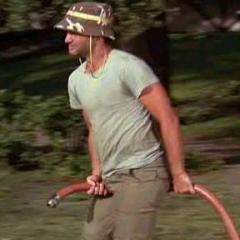Skill vs. Luck in Putting
45 members have voted
-
1. Read the question in the first post and answer here. Vote BEFORE you read any replies.
-
The gap between the good and bad putters would be narrowed.26
-
The gap between the good and bad putters would be increased.8
-
The gap between the good and bad putters would remain the same.11
-
-
Topics Being Discussed Right Now on The Sand Trap
-
- 19,522 replies
- 1,049,371 views
-
- 37 replies
- 3,729 views
-
- 3,841 replies
- 322,978 views
-
"5 Minutes Daily" Practice Challenge 1 2 3 4 840
By iacas, in Instruction and Playing Tips
- 5 minutes daily
- dedication
- (and 6 more)
- 15,113 replies
- 911,380 views
-
- 6,621 replies
- 255,270 views
-







Recommended Posts
Create an account or sign in to comment
You need to be a member in order to leave a comment
Create an account
Sign up for a new account in our community. It's easy!
Register a new accountSign in
Already have an account? Sign in here.
Sign In Now